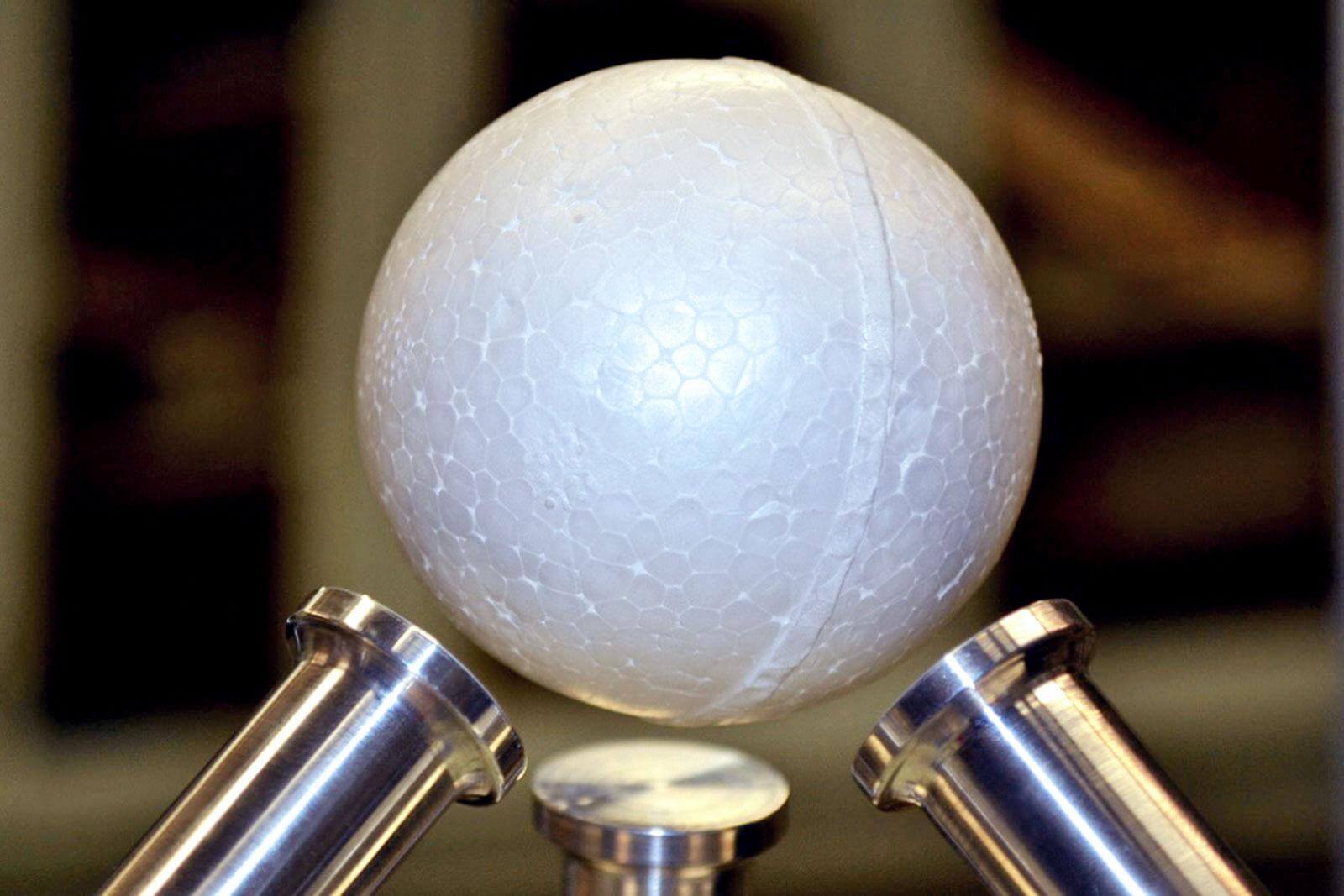
Misconceptions about sound waves or sound as a tool of antigravity
 03. 05. 2022
03. 05. 2022

A team of researchers from Columbia University published the results in February 2019 experiment, which showed that sound waves can transmit gravitational matter, because during research they found that sound waves can create small gravitational field.
Calculations have shown that sound waves have a slight negative mass, which means that in the presence of a gravitational field such as the Earth's field, their trajectory bends upwards. Physicists for years believed that sound waves could transfer energy, but they did not assume that they could transfer matter. The researchers thus proved that conventional thinking about sound waves was wrong.
Using quantum field theory, it has been found that if sound waves move in superfluid helium, they can move a small amount of matter. Scientists have shown mathematically that this phenomenon can occur even if they did not directly measure the mass transmitted by the sound wave.
In particular, they found that phonons (quasiparticles) interacted with the gravitational field in a way that forced them to transfer mass as they passed through the material. Based on this new research, the researchers provided evidence to show that the conclusions they reach apply to most materials.
Phonon describes the behavior of sound vibrations on a very small scale. Following these reports, the researchers suggested ways to conduct further testing in the real world. One option would be to use devices that detect gravitational fields to monitor earthquakes. When an earthquake sends signals across the planet, it could detect the device billion kilograms of massthat the sound carries.
In 2020, scientists developed an algorithm to detect earthquake signals that detect gravity and changes the density of the rock for a short time. These changes in gravity send signals at the speed of light, which allows shocks to be detected before the earthquake begins.
A year before this study, the same team introduced the theorythat phonons have a negative mass, and therefore a negative gravity. Surprisingly, phonons seem to resist gravity and rise, instead of falling.
"It turns out that under certain conditions, sound waves may actually start to rise rather than fall." says co-founder of string theory Michio Kaku. "And this is an anomaly, but it seems to be in accordance with the laws of physics that certain vibrations, instead of falling down, may actually rise."
For theorists of ancient astronauts, the results of the study were immediately used to explain how old they areancient people did move massive stones. Maybe they eventually used stones, sound waves and vibrations to move stones relatively easily.
Ancient stories suggested that sound was part of the social equation, and our ancestors built monuments with the obvious goal of amplifying a certain frequency. For example newgrange in Ireland, the pyramids of Egypt, or the underground Safal Saflieni Hypogeum at Malta. Maybe he used the sound waves as well Merlin during the construction of Stonehenge?
Abu al-Hasan Ali al-Mas'udi, an Arabic Herodotus (Arab historian), would find such a fantastic story familiar. Before 947 AD, al-Mas'udi recorded a legend about how ancient people built pyramids. First, they placed a magic papyrus under the edges of the stones and then they struck the stones with a metal rod and the stones began to float along the path indicated by the metal rod.
Note: Maybe the papyrus was related to magnetic fields and superconductivity. In an experiment with quantum levitation the crystalline sapphire wafer coated with an extremely thin ceramic layer is cooled. This makes it a superconductor and levitates over the magnetic field.
In ancient images found around the world, divine beings are often seen in strange poses, holding thin metal rods. In Egypt, for example, we see the ubiquitous scepter of Pharaoh. Also on Gate of the Sun. (in Bolivia) at the top of which the god Viracocha and a number of winged creatures are most likely depicted, all holding poles above a huge 10 ton gate.
By studying cymatics (the process of making sound waves visible), harmonic frequencies, and quantum field theory could come closer to understanding how old people moved giant megaliths. Today's engineers would certainly have trouble trying to imitate many ancient structures. Through sound experiments, sand particles can be moved in precise geometric shapes. And it is also possible to levitate small objects, such as ping pong balls.
In 2016 scientists have foundthat can levitate using high frequency sound waves with 5 cm polystyrene balls. To do this, they designed an ultrasonic wave generator.
"At the moment, we can levitate the object only at a fixed position in space," researchers M. Andrade and J. Adamowski (University of Edinburgh) said: "In the future, we would like to develop new devices capable of levitating and handling large objects in the air."
In connection with the ping pong experiment, Business Insider suggested that one day researchers generated trailing beam device in Star Trek style. Maybe one day we will rediscover technology that allows objects of considerable weight and size to move.
Former Director of National Intelligence (NI), John Ratcliffe, he revealed na Fox Newsthat the government has observed UFOs that can break the sound barrier without a sound bang. Obviously, conventional thinking about sound waves is changing rapidly. Is it possible that during our lives we will reveal the secrets of sound waves?





 1
1
